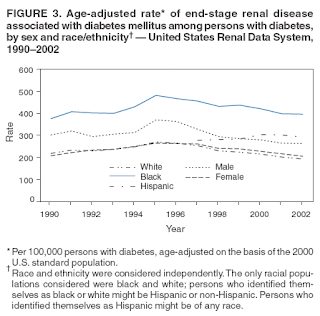Millions of families experienced economic decline since 2000; households of color hardest hit
New York, NY--As the economic downturn continues, a new report finds that millions of African Americans and Latinos lost economic security between 2000 and 2006, and that more than four out of five are either borderline or at high risk of falling out of the middle class altogether. The new report, "The Downslide Before The Downturn: Declining Economic Security Among Middle Class African Americans and Latinos, 2000-2006" was published today by the policy center Demos and the Institute for Assets and Social Policy (IASP) at Brandeis University.
"The Downslide Before The Downturn" is based on the Middle Class Security Index, co-developed by Demos and IASP/Brandeis, which uses government data and measures the financial security of the middle class by rating household stability across five core economic factors: assets, educational achievement, housing costs, budget and healthcare. Based on how a family ranked in each of these factors, they were defined as financially "secure," "borderline" or "at risk".
"The Downslide Before the Downturn" shows some worrying trends in America's households, including:
* In 2006, before the recession, most US middle class families (76%) were already economically insecure, with only 24 percent experiencing stability across the core Index factors. However, when the numbers are broken down demographically, only 16% of African Americans and 12% of Latinos experienced such security. This is a dramatic decline from 2000, when the national average was 29%, 26% for African Americans and 23% for Latinos.
* In 2006, 88% of Latino and 94% of African-American households lacked sufficient assets to weather a financial emergency, up from 82% and 89% in 2000, respectively.
* The median value of financial assets held by African Americans declined by 33% in the six year period, while those held by Latinos declined by 60% during the same time.
* From 2000 to 2006, median housing costs increased 9% for African American households and 7.5% for Latino households.
* During the same period, the number of families in which at least one member lacked health insurance increased--from 18% to 30% for African Americans and from 26% to 39% for Latinos.
"The decline in assets experienced by these families is particularly alarming," said Tom Shapiro, Professor and Director of the Institute on Assets and Social Policy at Brandeis University. "Most of these families had few assets to start with. With the value of these assets declining just as families need them most, they will not only find it difficult to weather uncertain times. They'll also experience setbacks that will be felt by future generations. All this points to a need for policies that support asset building even in hard times." ###
"The Downslide before the Downturn" is the fifth report in a series based on the Middle Class Security Index. Recent reports in this series examined the economic security of America's seniors and the overall position of the middle class heading into the recession. In addition to these reports, Demos and IASP/Brandeis have published a Middle Class Security Factsheet that provides information about the broad economic state of the middle class at a glance and a Scorecard that individual families can use to measure their economic stability. To download reports, the Security Scorecard or the Factsheet, visit www.demos.org. To order hard copies or to arrange an interview with one of the authors, please see contact information.
Contact: Laura Gardner gardner@brandeis.edu 781-736-4204 Brandeis University



































